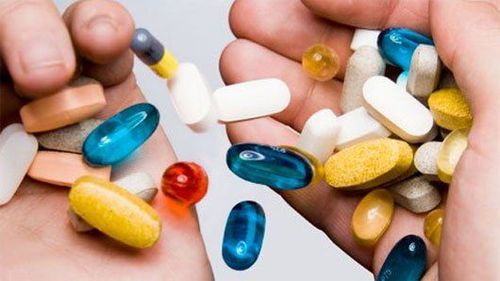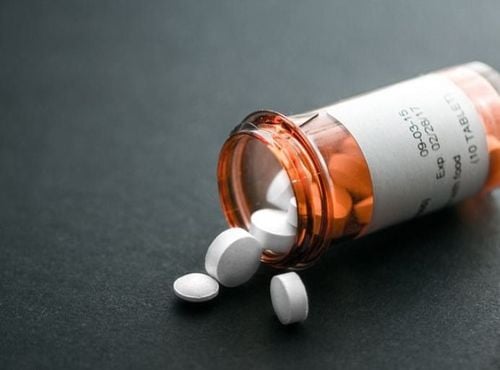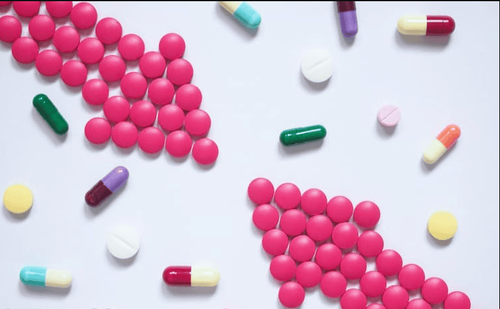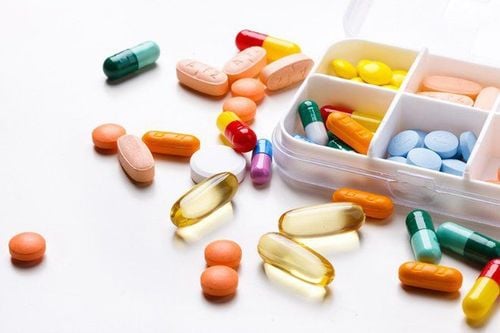This is an automatically translated article.
Taking medicine as prescribed by your doctor helps speed up recovery from illness and control illness. Understanding the ingredients on a medication label and learning how to read the label to follow directions can help reduce the risk of unnecessary visits to the doctor's office, emergency room, or referral. Here are the guidelines when you read sections of a medication label.
1. Active ingredient composition and purpose of the drug
Whether you're using prescription drugs, over-the-counter products, sunscreens, or supplements, it's a good idea to read product labels to make sure they're used correctly to get the most out of the product. and may help prevent harmful side effects. You can find information about the active ingredient and purpose at the top of the label on over-the-counter medicines. This section will specify the effects of the drug on the label. For example, sunscreen will say should be used for sun protection, while ibuprofen tablets will tell us what kind of pain or symptoms it is used for. Therefore, you will know what the product on hand is used for.
Prescription drugs will not have a purpose printed on the box, as the doctor will decide their purpose for the specific medical situation. That doesn't mean they should be used for other purposes. You should only use prescription drugs for the purpose discussed with your doctor and never share them with others and strictly follow your doctor's orders.
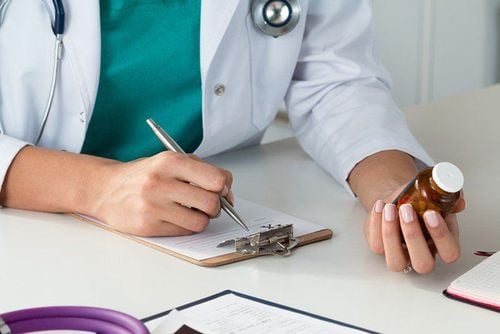
Nên sử dụng thuốc kê theo toa cho mục đích đã được thảo luận với bác sĩ
2. Instructions for drug use
All medicines will have instructions for use on the packaging or printed instructions leaflet inside. You should read these even if you have used this medicine before because it may have changed.
The instructions that come with the product will tell you how often to take the medicine like "take it once daily" or "apply every two hours" and they can even tell you what time of day you should use them. This can make a difference in how well the medicine works, so it's important that you follow the instructions on the label closely.
The instructions will also tell you how and for how long to take the medicine. You can take some medications long-term, while others can only be used for a few days at a time. Long-term use of certain medications can harm the body or reduce their effectiveness.
Some medicines will require a whole pack eg a course of antibiotics prescribed by a doctor. But others will require prolonged use depending on symptoms such as pain relievers.
If you do not understand the instructions or you are not sure exactly how to take or use the medicine, ask your pharmacist or doctor for specific explanations.
The usage section will also give you quick information about the symptoms or diseases that the drug can treat. For example, a painkiller label might say it helps with toothaches, headaches, joint pain, and menstrual cramps.
3. Warnings on drug labels
Sometimes drugs can cause side effects, which means they affect the body in a way that is not their intended purpose. This may be due to the body reacting to the drug or to a substance reacting to the drug.
The warning section on the medicine box or on the leaflet will instruct us what to do if we experience side effects when using the product. Side effects can range from a rash to feeling nauseous and can be mild or severe.

Phần cảnh báo trên hộp thuốc có thể được liệt kê dưới dạng chống chỉ định hoặc thận trọng
The warnings will also list what you should not do when using or using the product. For example, some drugs can interact with alcohol. Therefore, you must not drink alcohol while taking it, and combining these drugs with alcohol can have moderate to severe and sometimes fatal consequences.
It is very important to read any warnings before using a medication, even for simple products like sunscreen. As this can help you identify side effects quickly and will use the drug safer.
4. Expiration date information section
Although we can end the treatment chain of a drug or a product before they have expired. However, keeping them until past due is not a good idea because their effects are lost and can cause unwanted side effects that can be dangerous. Storing multiple medications can also lead to confusion and also increase the risk of misuse.
The expiration date is usually printed on the package, on the top of the tube or underneath the cap of the product. If you can't find an expiration date, check with your pharmacist for information.
5. Information about storage conditions
Some medicine labels will tell you how to store the medicine, for example, to keep it in the refrigerator, while others need to be kept in a dry place or tightly covered. Storing medicines properly will help keep their effects longer and use them safely.
6. Lot number and supplier name information
The lot number and supplier's name will be used to identify the drug if there is a problem with the medication. Occasionally, drugs must be recalled if they may not be as safe as a packaging defect. You can tell if your drug has been recalled by checking the lot number and provider name printed on the label.
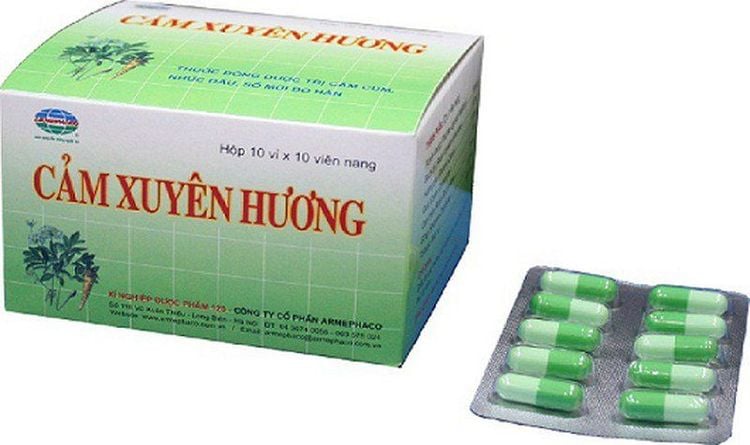
Số lô và tên của nhà cung cấp sẽ được sử dụng để xác định thuốc nếu khi có vấn đề xảy ra với thuốc
7. Other Information
Heat and humidity can sometimes damage medicines, so keeping them in the bathroom or in the car in warm weather may not be a good idea. This section of the label will tell you the appropriate temperature range to store the product. It also prompts you to make sure that the package's safety seal is not broken before you use it, which could be a sign of tampering.
8. Inactive ingredients
These are ingredients in a medicine that do not directly treat symptoms. They can be preservatives, dyes or flavorings. Always check this section if you have a food or dye allergy. Remember that different brands of the same medicine may have different inactive ingredients.
There is a lot of important information that comes with medicine, for example how to take it, its effects and side effects, etc..So take your time and read it carefully. carefully so you can avoid common dangerous mistakes before you start using them.
Any questions that need to be answered by a specialist doctor as well as customers wishing to examine and treat at Vinmec International General Hospital, please contact the Website for the best service.
Please dial HOTLINE for more information or register for an appointment HERE. Download MyVinmec app to make appointments faster and to manage your bookings easily.
References: webmd.com, health.qld.gov.au, clevelandclinic.org




